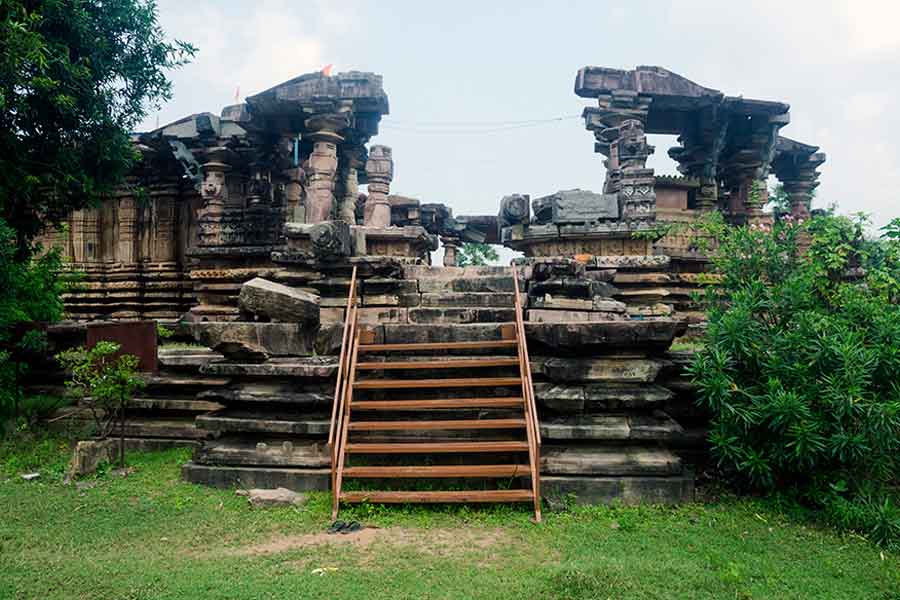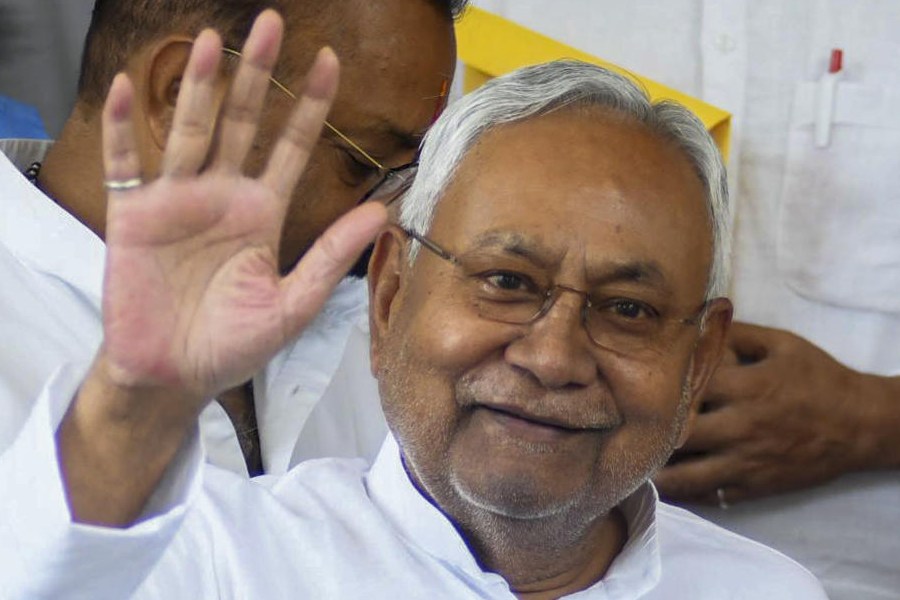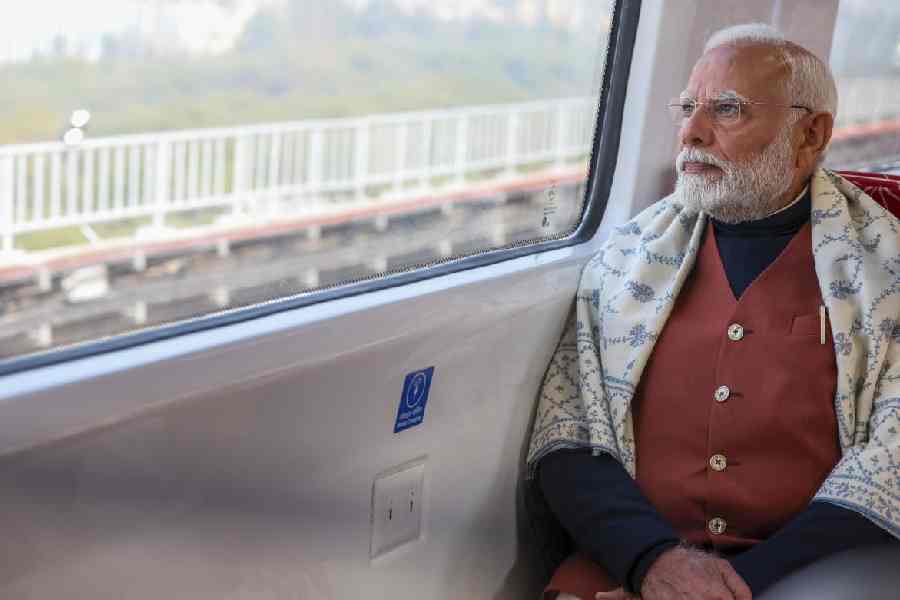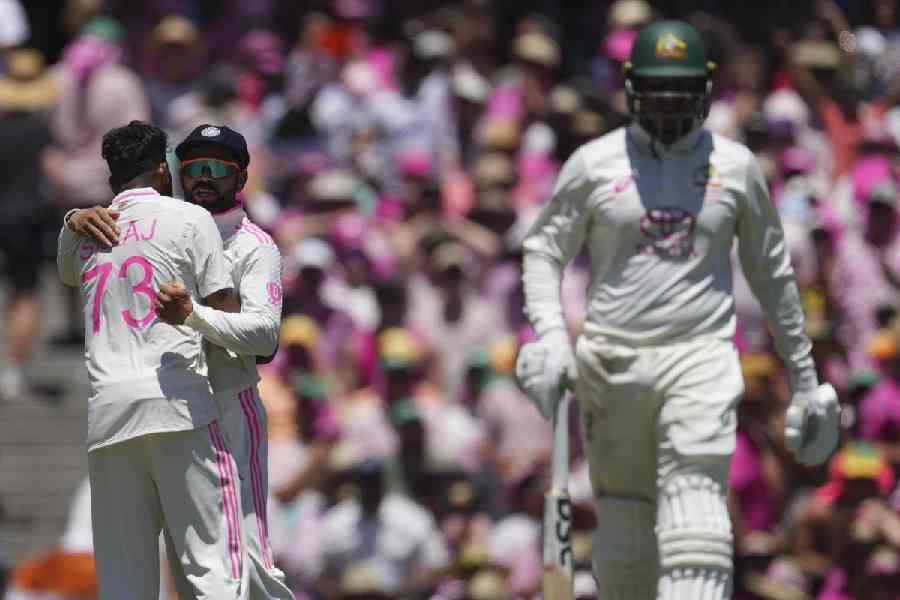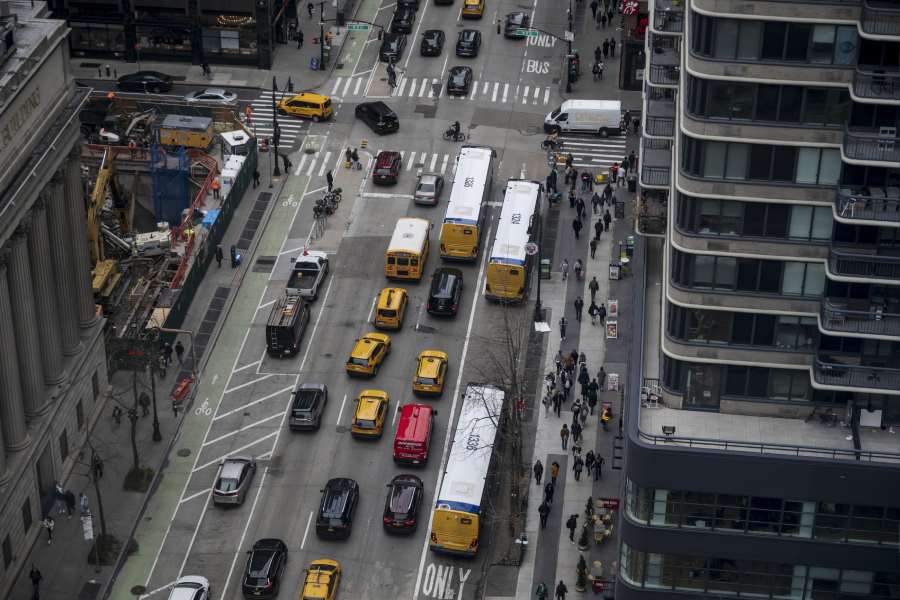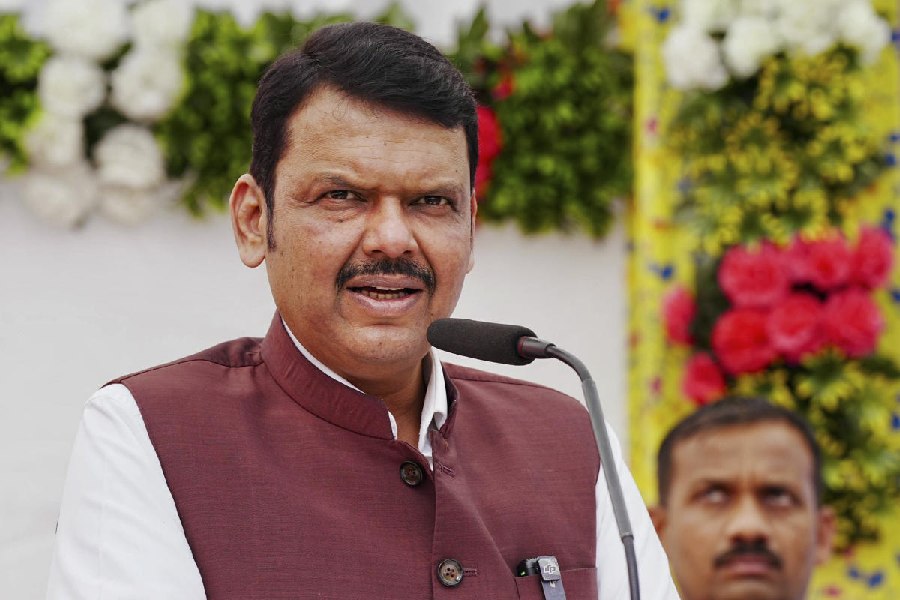An assortment of 800-year-old crumbling structures surrounded by lush green hills welcome visitors to Telangana’s Ghanpur temple complex, around 70km northeast of Warangal and 10km northwest of Ramappa Temple, recipient of the UNESCO heritage tag in 2021.
Popularly known as the Kota Gulu, the ruins of the Ghanpur temple complex date back to the early-13th century.
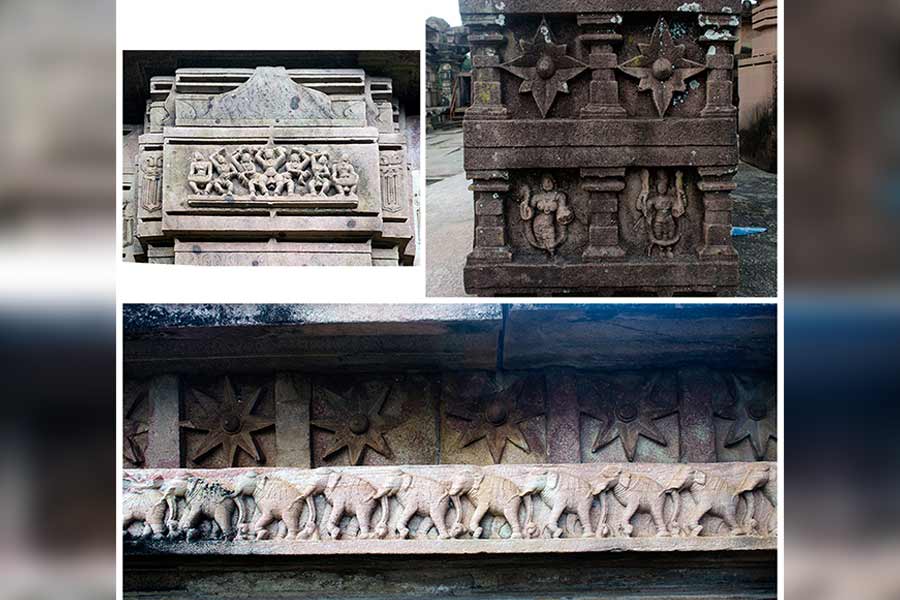
Collage of stone freezes from Ghanpur temple complex
The temple complex was probably constructed by Ganapati Deva (reign: 1199–1260) of Kakatiya dynasty. Ghanpur, once the citadel of power of the mighty Kakatiya dynasty, was plundered during the invasion of the Ghiyasuddin Tughlaq in 1323. Later, earthquakes and other natural calamities took their toll, reducing the mighty temple complex into an assortment of scattered ruins.
Today, the ruins of the temple are located. The Ghanpur temple complex is best explored on a day trip from Warangal and can be combined with Ramappa Temple and few other places of tourist interest.
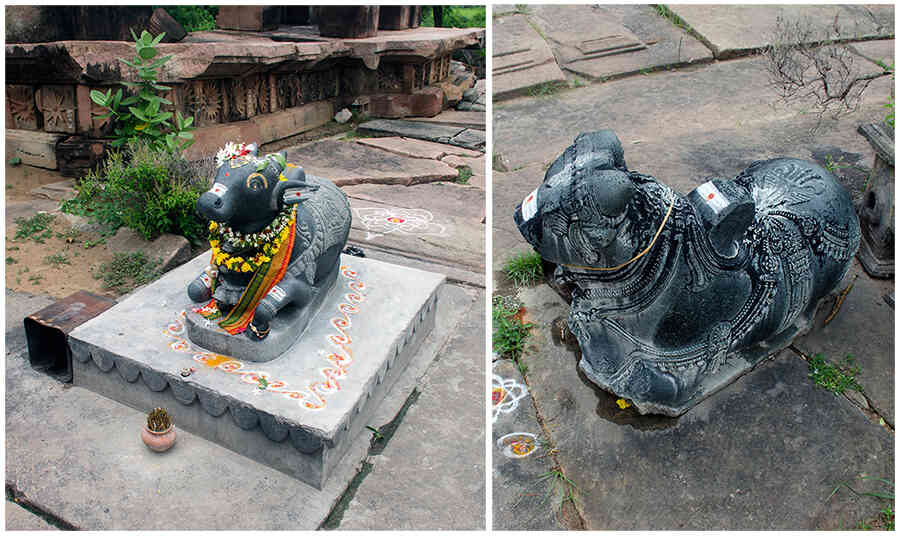
Two Nandi bull statues. (Left) Inside the courtyard of the central shrine and at its (right) eastern entrance
Today, the complex houses 22 ruined structures, which are in different stages of decay. The entire complex was once surrounded by a wall, which has largely collapsed. The entrance is through the western side through the collapsed portion of the wall. On the left are the remains of six small structures topped with spires. Once the inner periphery of the temple complex housed several such small shrines, today only six of them are in almost intact stage and the rest are in different stages of decay.
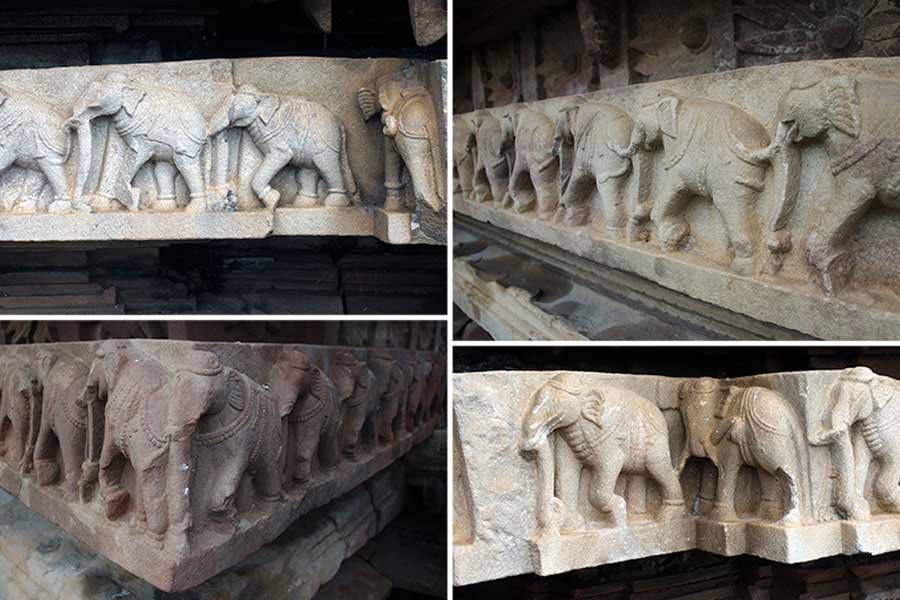
Collage of elephant freezes from Ghanpur temple complex
At the centre of the complex stands the main or central shrine dedicated to Shiva. To the north is a similar scaled down site also dedicated to Shiva. To the south stands a mandap (canopy). It is an active temple complex and attracts devotees from the neighbourhood.
The central shrine stands on a star-shaped platform. The roof has long collapsed and presently replaced with corrugated metal sheets. It houses the shiva linga, which is worshiped by the devotees. The linga is housed inside the inner sanctum approachable through a decorative stone doorframe. The central courtyard houses a statue of Nandi bull.
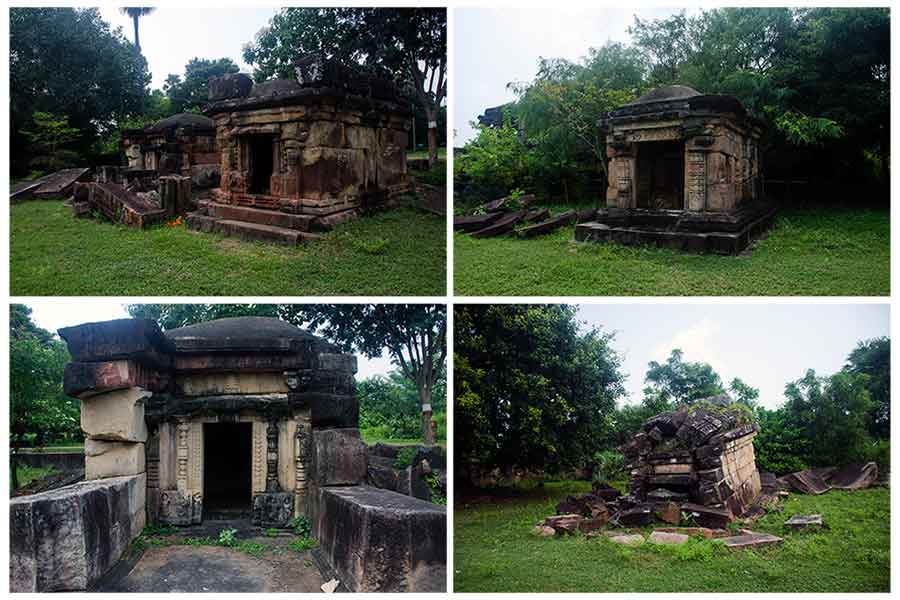
Collage of ruined temples and structures of Ghanpur temple complex
The temple has three gateways with the main entrance on the east. The north and south provides the two other entrances. The main shrine also contains basalt bracket figures of yalis (mythical animals) and mandakinis (dancers) but they lack the grace and beauty of their counterpart in Ramappa. The sandstone pillars and walls of the main temple contains exotic freezes, which includes elephants and lotus motifs.
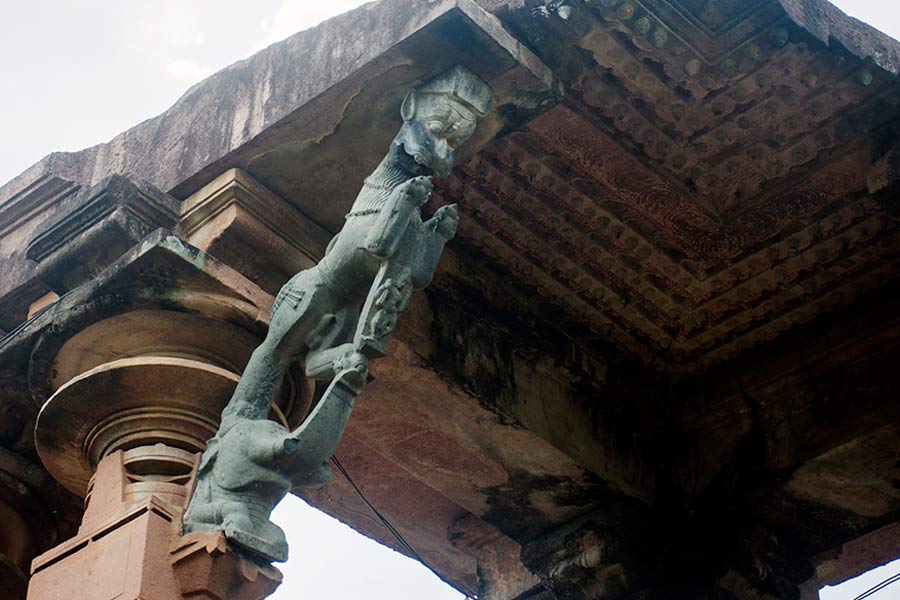
A bracket in the shape of mythical animal ‘yalli’
North of the main shrine is a similar shrine. It is smaller in size and lacks the grace and elegance of its immediate neighbour. Its roof has also collapsed and has not been replaced with corrugated metal sheets. It is not an active temple. The interiors consist of a collapsed stone from the temple and is not accessible. The mandap on the south is in a worse stage. It appears like a pile of balancing stones covered with thick layers of vegetation. Here also, the interiors are not accessible.
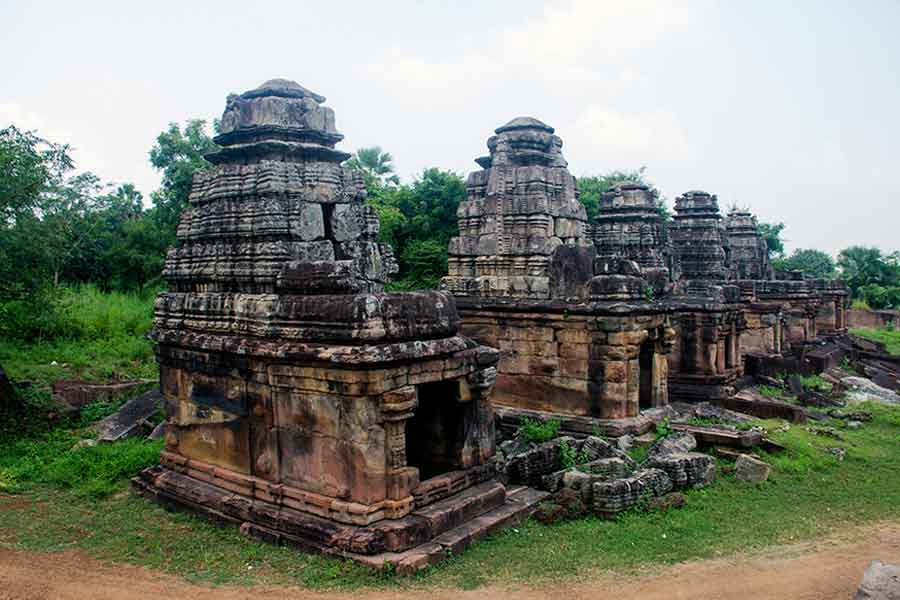
The six small temples on the Ghanpur temple complex
Apart from the three shrines and the periphery temples, the complex also houses several structures in various states of decay. The eastern or the main entrance of the central shrine houses a Nandi bull statue, with a broken mouth and nose. Fragments of decorative stone and parts of statues can be found scattered all over the temple complex.
Near the entrance of the temple complex is an open-air gallery displaying several statues. Some of the statues are original but others are cast copies of the original statues. Also on display are broken parts of temples, containing decorative motifs.
Quick info
Timings: Sunrise to sunset
Tickets: Free entry
Photography: Allowed
Getting there and around: Ghanpur group of temples is best explored from Warangal, which houses a fort and a couple of temples. Tagging the trip with Pandava Guhalu, Ramappa Temple and Laknavaram Lake would take an entire day. So, reserve a car.

